Erin Driessen – 6 September, 2012
Although my reading of the structure as female as well as male (also, in so far as the enclosure is an anus, it could be non-gendered/doubly-gendered) will be in some ways involuntarily prompted by my own biological gender and sexual orientation, and could be off track, I doubt Emmerson would entirely discount it. His practice and this exhibition specifically, acknowledge flux.
Dunedin
Neil Emmerson
inhabit me (like a memory)
30 July - 17 August, 2012
Behind a black curtain: a warm, vein-purple room. Air vents hum, panelled surfaces seem to pulse, space hides. Twenty frames and panels are arranged in a semi-enclosed formation which allows and invites penetration by the viewer, through several possible orifices. A red-and-blue, fleshly-printed panel; a hole. And again. Where are we? What am I?
This piece is extraordinary. It is nearly twenty years old, but stands timeless as it so effectively hones an immediate, visceral experience. The printed panels are beautifully executed (I would also love to see them outside of the flood of blue light). Almost seven feet tall, they are adorned with symmetrical ribbons, curved shapes akin to hearts and snakes, skin-like scales, and floral tiles. Interweaving lines and whirling symmetry give them a sense of movement; cocoons threaten to burst. Waif-white lines try to hold to dark forms and shadows; like sheets holding bodies, as layers are revealed through one’s own passage through the structure. Each panel is alternated by an empty frame; both the frames and panels vary in width but are the same height. The sounds of blowing air and quiet footprints from others heighten the senses as pathways end and begin.
The exhibition is accompanied by the catalogue written for the initial display of this work at the Australian Centre for Contemporary Art in 1993. In his catalogue essay, Robert Schubert wrote of the postmodernist “theatre/body rapprochement,” the gay male body as sign, and anal memory, within a framework set up by the writings of Antonin Artaud. The essay is heavily theoretical and, while shedding light on some of the work’s conceptual or cultural implications, serves in a way to downplay possible readings of gendered identities other than the gay male. Perhaps, simply, the work is not about other identities. Yet, the viewer’s interpretation of a work like this will always be informed by their own biological and social body.
Ideas surrounding identity politics and gender(ed) boundaries are heavily embedded in Emmerson’s work. I was aware that upon stepping through a frame, going inside, my body turned phallic, an unsexed shaft of skin and flesh. Yet, couldn’t I have been a finger (male or female), and this a vaginal structure? Schubert commented in his essay on Emmerson’s use of an elongated, upside-down ace of spades shape, its arms holding an oval, writing, There is a scarcity of obviously phallic signifiers in Emmerson’s enclosure, but it is there in the swelling of the ace of spades. The doubling up of phallic encounter is precisely that: an encounter motivated by a swell and not rigidity (like two combative swords). The phallus is a blue veined, skinned surface swelling to the touch of other skinned surfaces. This is what makes it swell. The touch of the surface on other surfaces, sometimes from the inside. In shape alone, the ace of spades, especially with a circle added to its middle, is not obviously phallic, but undeniably vaginal. As sign, it can be read as a “doubling up of phallic encounter,” and an opening up of a feminine kind.
Although my reading of the structure as female as well as male (also, in so far as the enclosure is an anus, it could be non-gendered/doubly-gendered) will be in some ways involuntarily prompted by my own biological gender and sexual orientation, and could be off track, I doubt Emmerson would entirely discount it. His practice and this exhibition specifically, acknowledge flux, what Schubert sees in the ace of spades sign as “a game where the rules change to fit the circumstances of the state of play … constantly undergoing redefinition through the force of play, passion and contingency.”
An epigram from Artaud opens Schubert’s essay with Who am I? Where do I come from? Emmerson’s fleshy enclosure could be a path by which the body returns home. Though readings of this piece as a metaphor for birth could be made (with the curtain, anatomical-like drawings, and partition panels), the body is not climbing back into the womb. Here, collective anal memory specific to gay male sexual identity meets its point of origin over and over again. Gay male encounters preclude conception of a biological being, but with each ‘doubling’ of the phallus, or pairing of the penis with “a genital integument,” another layer of being is created.
While this piece is viscerally accessible, there is still a sense of not belonging, or of misunderstanding. I don’t think this is a failure of the artist or of the work. While gender is biological, it is also culturally constructed, from within and without; and while it is flexible, each manifestation of that flexibility is specific to itself. The parenthetical framing of Emmerson’s piece acknowledges and accepts the inescapability of certain viewers not being able to know. Bodily memory, collective and individual, is private and public, in and out, flesh and skin.
Erin Driessen
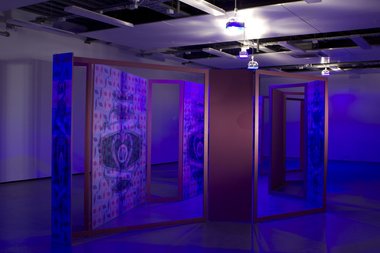
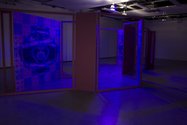
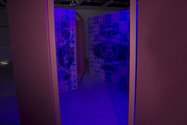

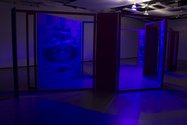
 Advertising in this column
Advertising in this column Two Rooms presents a program of residencies and projects
Two Rooms presents a program of residencies and projects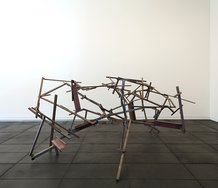
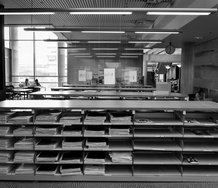
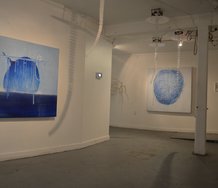
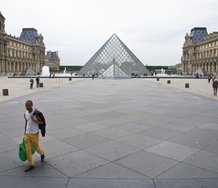
This Discussion has 0 comments.
Comment
Participate
Register to Participate.
Sign in
Sign in to an existing account.